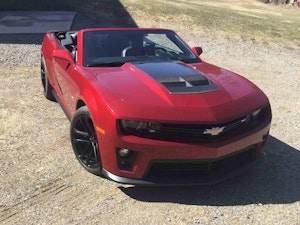Media | Articles
Worth A Thousand Words
Photo-Documenting A Restoration Is The Key To Doing It Right
Poor Project organization is probably one of the largest causes of stalled and abandoned restorations. Keeping track of where things are, where they go, and how they fit together is a big part of staying organized.
In the old days, restoration organization consisted of a few photographs, many sketches and plastic bags with notes written on them. The process worked but was tedious.
Today, organization centers on a digital camera and a common-sense filing approach. It can all be backed up, and it will continue to be useful after the restoration is finished. And remember, there is no such thing as too many photos.
Getting pictures before things come apart — both in a macro and micro view — greatly aids in getting things back together correctly. Once the car has been thoroughly cleaned, take a few hundred photos of every section of the car: inside, outside and underneath. Then, as disassembly proceeds, take detailed photos of every subassembly from several angles. “Exploded view” photos of parts laid out in order of reassembly replace the sketches of yesterday. Additionally, resolutions available today make it possible to zoom into a detail like an individual fastener to look at its head markings.
Marketplace
Buy and sell classics with confidence
Before boxing or bagging any parts, lay them out and photograph them so you’ll know exactly what’s going in. Do the same before sending parts off to the sandblaster, powdercoater or chrome plater, and make a quick copy on your printer. When you pick up the parts, check off each item from the print.
Photos uphold the provenance of the car. Pre-restoration photos provide the link to the car’s history. Progress photos show the quality of the work, assuring future caretakers that the car was in good hands during previous ownership. Photos showing proper damage repair, especially bodywork, are essential to showing that a car was restored skillfully.
Organizing these photos may seem daunting, but it doesn’t have to be. More compulsive people will name every photo and maybe even create an index. Another effective method is to make sure the time stamp is correct on the camera, then keep all the photos in one directory or folder.
Backup is important, too, so use a jump drive or a cloud-based storage solution to ensure you can retrieve photos if your computer is damaged.
Finally, when the restoration is done, select the best photos — 20 or 200 — and publish a book via one of the many services available from local and online retailers. Keep a copy of the book with the car and another copy or two back home. Digital photography has really changed restoration. Embrace it, use it, and enjoy the results.










